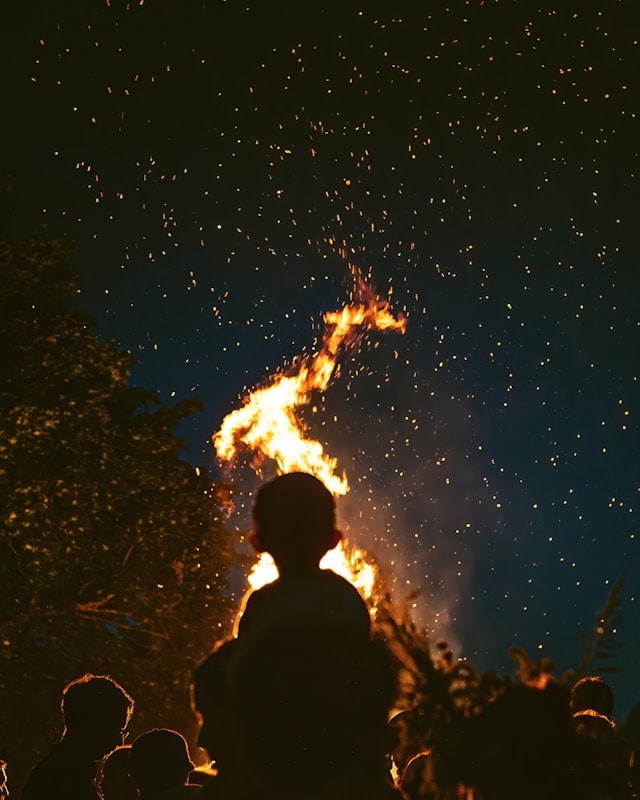This article was written for
Summer Camp 2025. Therefore it is unpolished and lacking formatting and information. Feel free to comment with any questions or requests for clarification.
The end of the harvest season is sacred for the
people of
Serukis. It is a time to give thanks to the
Elemental Monarchs for the year's bounty, and to make offerings to ensure the flourishment of the next year's crops. The main focus of this time is the feast of
Faolan's Gift, held on the
autumn equinox, and the ritual of the
Giving, both conducted in honour of
Faolan, the Monarch of Earth. However, many people look forward to bonfire night, which is held on the last night of
Lanvus. It is a tribute to
Elian, the Monarch of Fire, for the
sun that helped the crops grow, and a plea for his protection through the coming
winter.
Bonfire night is celebrated all over Serukis, though nowhere with more vigour than
the Midlands, who claim Elian as their patron. The tradition has also spread to
the Skarrens, though there the night has a wilder edge and the lingering presence of
older gods. Unlike Faolan's Gift, bonfire night is not celebrated in
Kaien, despite the shared religion. The
Kaienese have branded bonfire night as 'vulgar' and 'disorderly', with some going so far as to say it is 'a deliberate display of contempt for Faolan's domain.'
The main draw of bonfire night are, of course, the
fires. These are built in the week leading up to the festival, with crop byproducts such as cornstalks, inedible leaves, and pest-damaged produce tucked in amongst the layers of
wood. Every settlement will have at least one bonfire, with some larger cities, such as
Whitecastle, usually having upwards of ten spread across their districts. Some farms will build their own at the edge of their fields, though many farmers prefer to celebrate with their community. The fires are lit as darkness falls and are kept burning until the sun peeks back over the horizon.
Whilst the fires are lit, people gather. The night starts with prayers to Elian, though the prayers swiftly give way to singing and dancing.
Apples and balls of dough are speared onto sticks and baked over the open flames. The drinks of choice are
cider or
perry, and even children are allowed a small cup. When the fires burn down to an appropriate size, teenagers and young adults - usually men, though it is not forbidden for women - partake in the tradition of bonfire jumping. This is traditionally done naked to prevent clothes catching alight. Those that are successful are said to be blessed for the next year. Those that stop short before jumping are encouraged to say an extra prayer or two - just in case.
One of the most important parts of bonfire night is ensuring that the vulnerable have extra divine protection over the winter months. Children craft
dolls out of grass, twigs, and berries, for themselves, their younger siblings, and their elderly or sick relatives. These are then tossed into the flames, alongside the declaration of the name of the person to be warded. All are encouraged to do this part themselves, though those that are unable, such as babies and the infirm, can have a relative do this for them. If the doll tumbles out of the fire and is not consumed, it must be nailed with
iron to the wall above where the person sleeps, and then burned on the longest night of the year.



















I had to click, given bonfire night irl is my birthday <3 A beautiful article as always, love it! <3
Thank you! :D <3
Explore Etrea | WorldEmber 2025